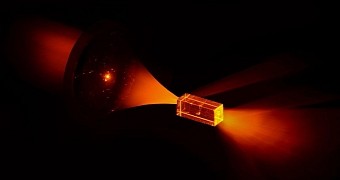Quantum computing is seen as the next stage in technological development, not only on the processing level but that of storage space as well. It is the latter area where a team of scientists from the Australian National University has made a breakthrough.
At the moment, the high-end hard disk drives used by most people, whether in their computers, NAS devices or servers, are those with a capacity of 4 TB.
However, 5 TB and 6 TB units have started to crop up more and more, and there are even 8 TB drives now, thanks to the everlasting competition between Western Digital, Seagate and Toshiba.
This will change because of a team of scientists from the Research School of Physics and Engineering (RSPE), a division of the College of Physical & Mathematical Sciences at ANU.
Or at least that is part of what they hope to achieve. Currently, the focus is on speed of storage and transfers rather than space.
A 100 TB quantum HDD
Collaborating with some physicists from the University of Otago, the scientists stored quantum information in atoms of europium, a rare element. The europium was embedded in a crystal.
A quantum state is written on the nuclear spin of the europium using laser light, after which the crystal is subjected to a combination of fixed and oscillating magnetic fields, to preserve the fragile quantum information.
This is the main issue with quantum storage at the moment: the data is lost quickly. Even with their best efforts, the physicists weren't able to enable a storage time of more than six hours.
However, that is still a hundred times longer than anything achieved before, and more importantly, a duration that can be put to practical use.
Practical applications
A quantum HDD with the ability to store data for six hours instead of a few milliseconds could be used in banking transactions and personal emails, among other things that need security. Quantum storage provides unbreakable encryption, due to quantum particles being created in a way that intrinsically links them in pairs.
It could be possible to store entangled light in separate crystals and transport them to different parts of the network thousands of kilometers away from each other. This turns the devices into portable optical HDDs for quantum entanglement.
The underlying irony here is that this all is actually a solid state storage technology, so it would probably be more accurate to call these things SSDs, but we'll go with what the scientists say.

 14 DAY TRIAL //
14 DAY TRIAL //